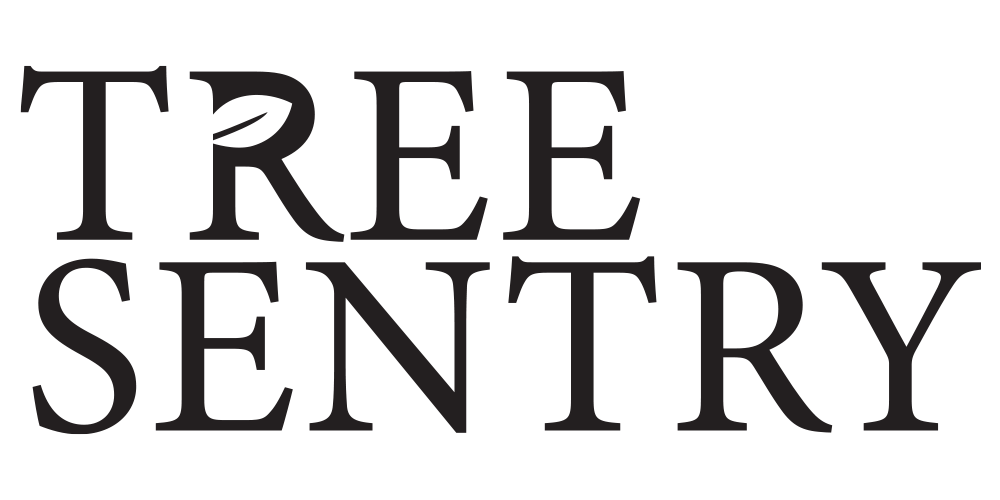Our difference.
If you look, you’ll find several seedling shelters promising tremendous improvements in your planting experience. Many other shelters are very similar in appearance and employ seedling protection approaches used since the late 1970s. Most feature a long slender tube, extruded or assembled (by you, the planter) from sheets and attached to an external stake with wires, staples, or pull ties.
The Tree Sentry is not a copy of another idea with minor modifications. Instead, it reflects an intense study of those aspects of plant shelters that work well—and those that don’t—and then takes a unique approach to its shape, stability system, materials, installation method, and manufacturing process. And quite simply, these changes work.
- The self-anchoring design requires no installation tools, so carrying a hammer or mallet and a bundle of stakes is unnecessary.
- With three integral wire stakes, the Tree Sentry pushes into the soil in seconds without assembly or wire ties required.
- The photo-degradable translucent base and protective browse mesh combine to protect seedlings from wind and intense sunlight. The protective, windless environment of filtered sunlight promotes photosynthesis, thus accelerating root system development and planting calipers.
- The plant’s tendency to “reach” for light—a botanical process called phototropism—enhances its vertical growth. The brighter light entering the Tree Sentry’s unique cone top accelerates vertical growth.
- The top section of browse mesh on the Tree Sentry offers protection against animals as the planting matures. Some species may produce as few as one terminal bud, and improperly browsing a solitary terminal bud can be fatal.
- As a seedling develops and matures into a sapling, it benefits by feeling the effects of the wind. As opposed to a tall, enclosed tubular shelter, the Tree Sentry permits that beneficial activity as the planting matures and extends beyond the 18” tall conical shelter and into the rigid browse mesh. That wind-buffeting activity promotes a strong trunk in the sapling, making it less vulnerable to fracture during a storm, snow load, or heavy wind. Feeling the effects of the changes in seasons while still being protected from browsing allows the sapling to shut down properly and enter dormancy for the winter. No other shelter offers that combination of protection.
- With its generous diameter at the base and tapered conical shape, the Tree Sentry offers a wider basal area than other shelters and improved ventilation at the top. That allows for lateral branching of the seedling, which is very important for conifers and deciduous species. When used with the optional browse mesh, the seedling is exposed to the wind while maintaining protection against wind desiccation of the soil at the base.
- Before the roots of a seedling have developed and pushed far beneath the surface, they are most sensitive to extremely hot environments. The 360-degree shading of the rootstock keeps the ground, which envelopes the tap root, cooler. At the same time, by shading the soil and keeping arid winds from stripping the moisture from the plant and soil, the soil conditions under the Tree Sentry have been shown by independent studies to contain more moisture than the surrounding soil. That promotes survival rates far beyond those of unsheltered seedlings or those protected with mesh alone.
- Browsing animals and rodents such as rabbits, voles, and other critters love to devour conifer seedlings, chewing the soft, nutritious cambium around the base of the seedling (called “girdling”), inflicting a mortal wound to your project. And, in the winter, when the soft blanket of snow hides other ground cover that can otherwise camouflage a seedling, those pretty seedlings grown in generously fertilized, nutrient-rich soils, (often in greenhouses) stand out of the snow to passing deer. The Tree Sentry protects your planting from animals.
- Even on hot summer days in the southwest, the nights are sufficiently cool for dew to develop on ground cover and seedlings. When the sun comes up, the morning breezes can quickly strip this condensation from the seedlings, robbing them of the moisture with which they could otherwise flourish. With the Tree Sentry, moisture stays with the seedling longer, allowing it to drop onto the soil, benefiting its growth. Full-length mesh or fully vented tubes cannot deliver that kind of benefit.
- Herbicides are often used around a planted seedling to clear competing vegetation, which can otherwise overrun young seedlings, denying them needed moisture and nutrients. If conditions or available equipment do not allow tilling or scarifying the local site, the herbicides used to scale back the weeds can accidentally damage or kill the planted seedling. The Tree Sentry protects seedlings from the lateral drift of herbicides. The later drift of spores proliferating some invasive species can devastate newly planted seedlings. Studies have shown the Tree Sentry to reduce the occurrence of infestation of invasive species such as dwarf mistletoe and others in conifer species, in which spores drifting across the site will easily land on unprotected seedlings or those protected with mesh or fully vented designs. Those invasive species will shunt the growth of the seedling by feeding off it and can cause deformed growth and death of the seedling.
- Behaving like a miniature greenhouse, the Tree Sentry mitigates the stress on plantings caused by outside temperature extremes.

